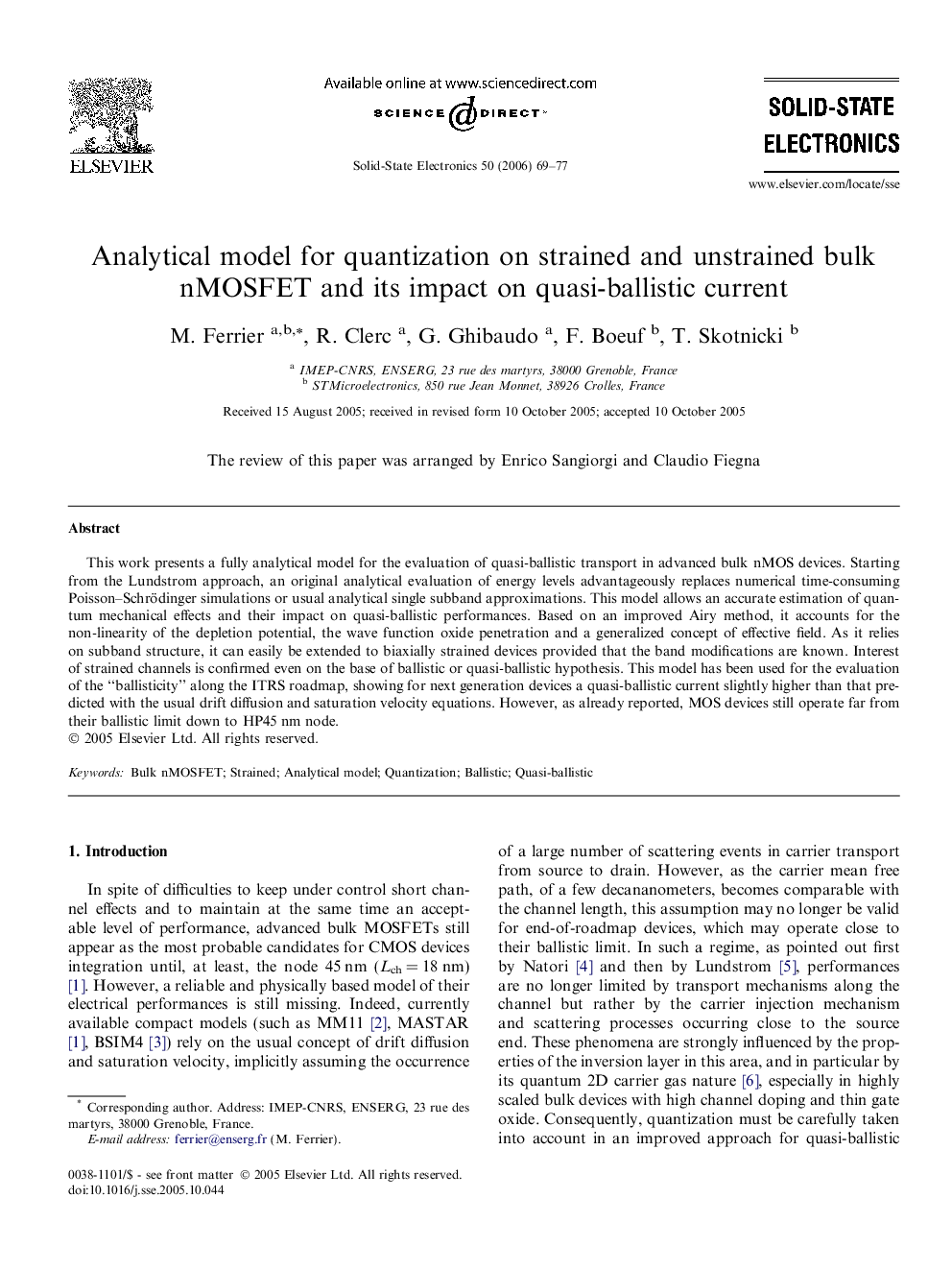| Article ID | Journal | Published Year | Pages | File Type |
|---|---|---|---|---|
| 747585 | Solid-State Electronics | 2006 | 9 Pages |
This work presents a fully analytical model for the evaluation of quasi-ballistic transport in advanced bulk nMOS devices. Starting from the Lundstrom approach, an original analytical evaluation of energy levels advantageously replaces numerical time-consuming Poisson–Schrödinger simulations or usual analytical single subband approximations. This model allows an accurate estimation of quantum mechanical effects and their impact on quasi-ballistic performances. Based on an improved Airy method, it accounts for the non-linearity of the depletion potential, the wave function oxide penetration and a generalized concept of effective field. As it relies on subband structure, it can easily be extended to biaxially strained devices provided that the band modifications are known. Interest of strained channels is confirmed even on the base of ballistic or quasi-ballistic hypothesis. This model has been used for the evaluation of the “ballisticity” along the ITRS roadmap, showing for next generation devices a quasi-ballistic current slightly higher than that predicted with the usual drift diffusion and saturation velocity equations. However, as already reported, MOS devices still operate far from their ballistic limit down to HP45 nm node.
